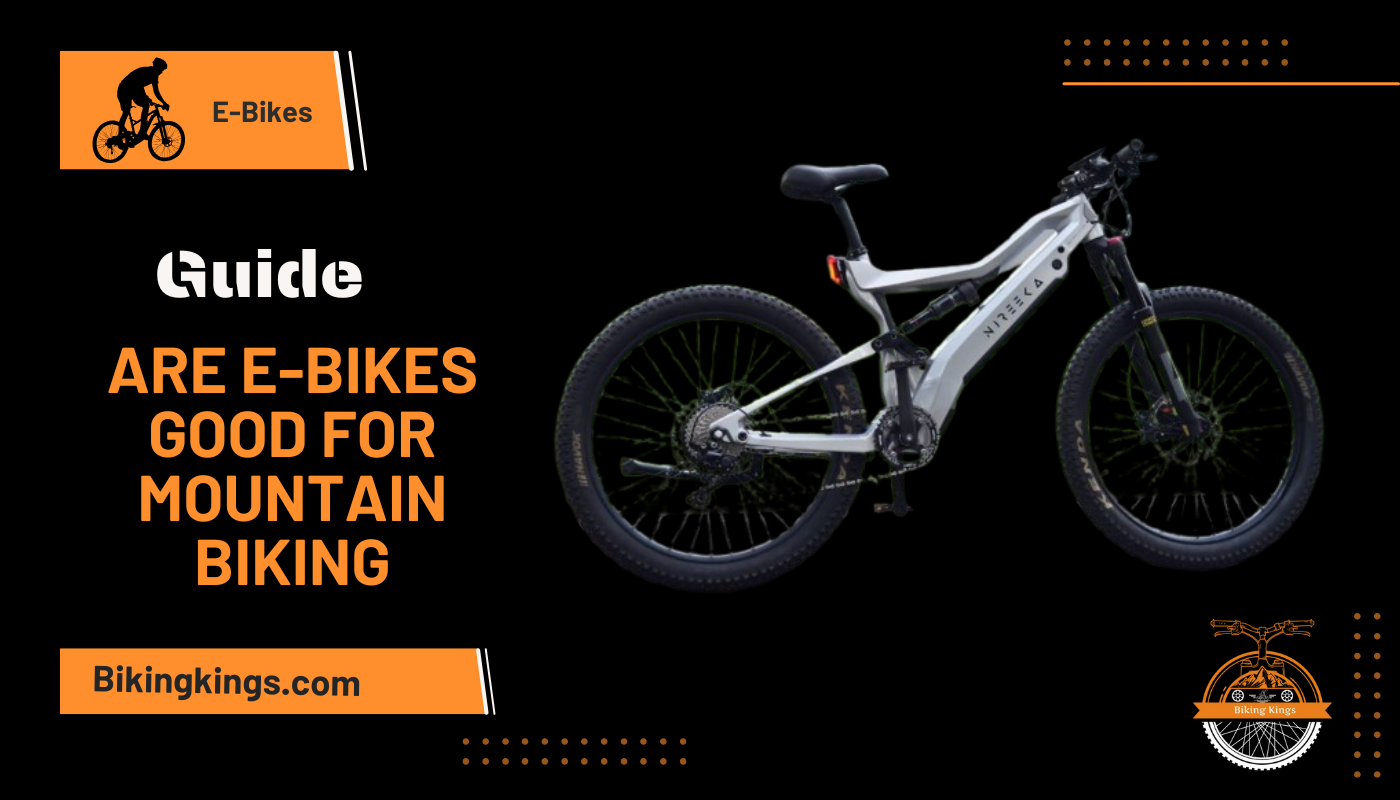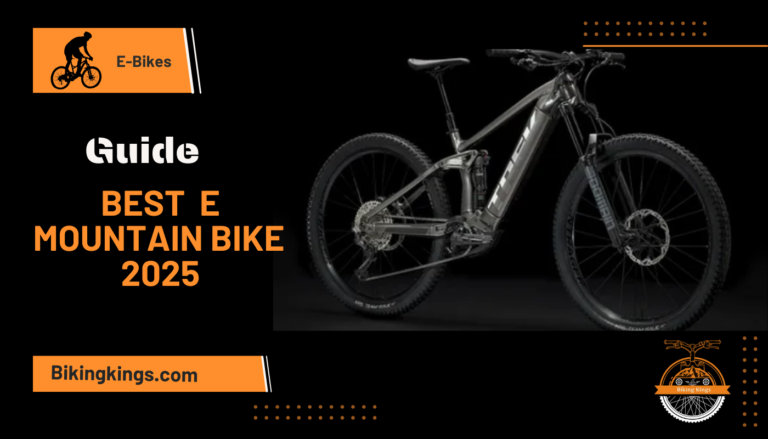Rise of E-Bikes in Mountain Biking
The main advantage is that riders can tackle more diverse and steeper terrain without exhausting themselves as much. This makes mountain biking more accessible to those who might not have the fitness to tackle extreme climbs or long-distance rides but still want to enjoy the adventure of exploring nature.
Peaks:
- Less Effort on Challenging Terrain
- Increased Distance and Endurance
- Improved Accessibility
- Boosted Fun Factor
- Saves Time on Steep Climbs
Troughs:
- Higher Initial Cost
- Increased Weight
- Maintenance Costs
- Limited Battery Life
- Trail Regulations
- Heavy on Battery Dependence
How E-Bikes Enhance Your Mountain Biking Experience
E-bikes enhance the mountain biking experience in several key ways:
- Assisted Climbing: With an e-bike, you get a boost during uphill rides, reducing the amount of physical effort needed. This is perfect for riders who struggle with steep ascents or those who wish to conserve energy for more challenging sections.
- Increased Range: With electric assistance, riders can travel farther and take on more challenging trails. The motor extends your reach beyond what you could cover on a conventional bike, letting you explore remote parts of nature.
- Faster Descents: Riders can now descend from mountains or hilly trails with more confidence, enjoying the speed without the risk of fatigue affecting their control.
Ultimately, the addition of an electric motor transforms mountain biking by leveling the playing field between expert riders and beginners.
Key Differences Between Traditional Mountain Bikes and E-Bikes
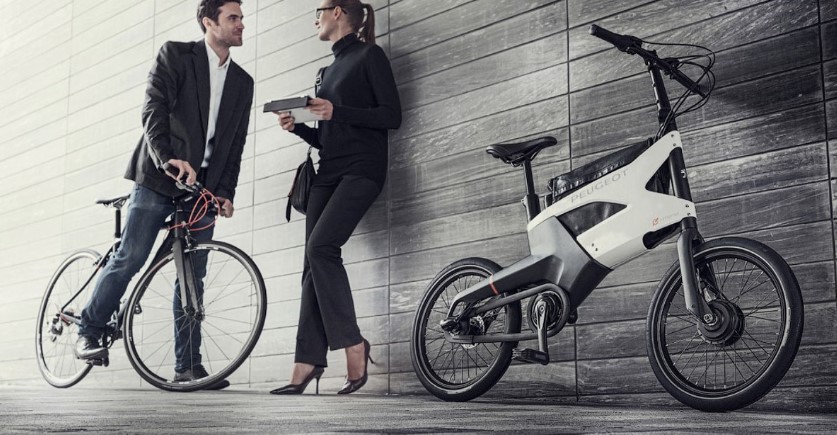
The primary difference between traditional mountain bikes (MTBs) and e-bikes lies in the electric motor:
- Power: Traditional MTBs depend solely on leg power, while e-bikes come with a battery-powered motor that can assist pedaling, ranging from 250W to 750W in power.
- Weight: E-bikes are heavier due to the motor and battery, but many high-end models are designed to keep the weight balanced for off-road use. Traditional mountain bikes, being lighter, provide greater agility on flat terrain.
- Cost: E-bikes are typically more expensive than traditional bikes due to the additional motor and battery technology. The entry-level e-bikes cost more than mid-range traditional MTBs but offer more advanced features.
While both types have their merits, the e-bike’s versatility with added power assistance gives it an edge for tackling mountain trails.
More Related Post: Is Mountain Bike More Fun Than E Bike: Which One’s Enjoyable
Types of E-Bikes Suitable for Mountain Biking
Not all e-bikes are designed for mountain biking. There are three major types that you should be aware of:
- Hardtail E-Bikes: These are the most similar to traditional mountain bikes. They have a front suspension but lack a rear shock. They’re best for light to moderate mountain biking, offering easier handling and a lighter overall bike.
- Full-Suspension E-Bikes: These offer both front and rear suspension, making them ideal for rougher trails. They provide a smoother ride on technical terrain, offering greater comfort and better control during downhill descents.
- Fat Tire E-Bikes: These are great for riding on sandy, snowy, or loose terrain, providing more traction with their wider tires. They’re particularly good for all-season riders who want to continue mountain biking through tough conditions.
ℹ️ Be cautious with your assistance use on hazardous technical sections – the bike’s heavyweight, combined with its immense power, could lead to a nasty accident if you aren’t careful or don’t have the strength to cope with it.
Benefits of E-Bikes for Mountain Trails and Steep Terrain
E-bikes offer a massive advantage on steep and challenging mountain trails, especially if you find yourself winded after the first climb or exhausted halfway through. Here’s how e-bikes change the game:
- Easy Climbing: With electric assist, climbing hills becomes much less demanding. Whether you’re dealing with rough gradients or rocky surfaces, the motor boosts your pedaling power, allowing you to take on more advanced climbs.
- Preserved Energy for Long Rides: On a long ride, managing your energy is critical, and e-bikes let you control the assistance level. Whether you want a light boost or a more significant assist on a challenging climb, it’s up to you.
- Better Maneuverability: E-bikes are especially beneficial when navigating through tricky terrain or over obstacles like rocks, roots, and large puddles. The motor allows you to clear difficult sections with ease and minimizes the need for sudden bursts of strength.
Are E-Bikes Less Challenging? Understanding the Effort
Some purists might argue that e-bikes reduce the “challenge” of mountain biking. While it’s true that an electric motor assists in propulsion, mountain biking with an e-bike still requires significant effort, particularly when it comes to navigating terrain, balancing the bike, and making quick maneuvers.
- The effort to navigate the trail may be diminished, but you’re still tackling technical aspects of mountain biking, such as handling slopes, corners, and jumps.
- It’s crucial to note that e-bikes allow riders of varying abilities to experience more challenging trails that they wouldn’t typically be able to manage with a traditional bike.
Ultimately, e-bikes offer a more inclusive way of experiencing mountain biking, allowing individuals of all fitness levels to enjoy the ride.
Durability of E-Bikes in Rough Terrain
A valid concern for those considering e-bikes for mountain biking is the durability of the bike’s electric components (motor, battery, and controller) in rough conditions.
- High-quality e-bikes designed for mountain biking have durable and weather-sealed motors and batteries that can handle dirt, mud, and rain. Many premium e-bikes also feature motors with increased protection to withstand the rigors of rough trails.
- However, e-bikes still need careful attention during repairs. Batteries and motors will eventually wear out over time, and some parts will require professional maintenance or replacement.
Regular maintenance and monitoring of your e-bike’s key components will ensure you have a long-lasting and smooth riding experience.
Battery Life and Range: What You Should Expect
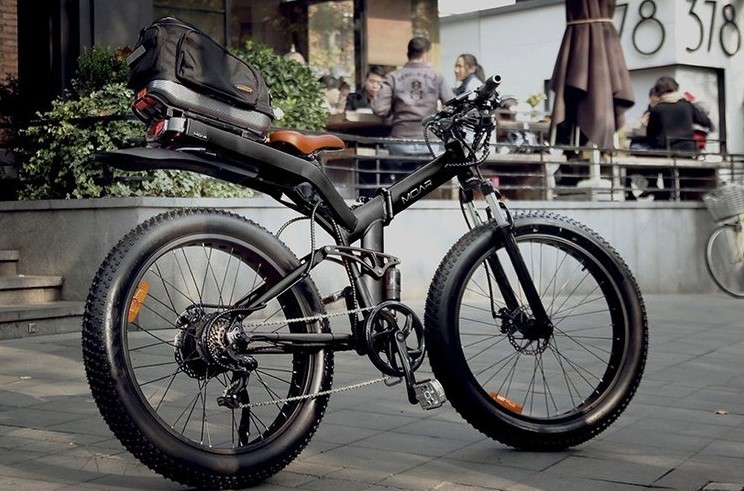
One of the primary concerns with e-bikes is battery life. The range of your e-bike depends on multiple factors:
- Battery capacity (typically between 400Wh to 700Wh)
- Terrain type and trail steepness
- Pedaling effort: The more you rely on the motor, the quicker the battery will drain.
- Rider weight and gear.
On average, you can expect an e-bike’s battery to last anywhere between 40 to 80 miles on a single charge. Some models come with interchangeable batteries for longer rides. Riders should also factor in charging time (usually between 4-6 hours) when planning long biking trips.
More Related Post: Can An Electric Bike Go Uphill? Elevate Your Ride
How Choosing the Right E-Bike: Key Features to Look For
When buying an e-bike for mountain biking, it’s essential to focus on a few critical features:
- Motor Type and Placement: Most mountain e-bikes come with hub motors or mid-drive motors. Mid-drive motors are generally more preferred for mountain biking as they provide better balance and efficiency.
- Suspension: Depending on the type of terrain you’ll ride, choose between hardtail (light to moderate trails) or full-suspension (for rough and extreme trails).
- Battery Capacity: Opt for a larger battery for longer-range rides.
- Braking System: High-quality hydraulic disc brakes are critical for safe downhill riding.
Cost Considerations and Value of E-Bikes
E-bikes come in a wide range of price points based on features and build quality. The initial cost may be high, especially for mid-range or premium models. Prices typically start from $1,500 for basic e-bikes and can go beyond $5,000 for top-of-the-line models.
For those serious about mountain biking, e-bikes offer a great return on investment due to their versatility, ease of use, and ability to tackle tougher rides. Many riders consider the cost well worth the long-term benefits, given how much they improve the mountain biking experience.
Maintenance and Repair of E-Bikes for Mountain Biking
E-bikes require specific maintenance to keep them running smoothly:
- Battery Care: Charge regularly and avoid overcharging. Store in a cool, dry place.
- Motor Inspection: The motor may need regular servicing depending on use. Check for wear and tear, especially with mechanical parts such as gears.
- Brakes and Tires: As with traditional bikes, checking the condition of brake pads and tire treads regularly is vital.
Proper care will ensure your e-bike lasts through many adventures.
How E-Bikes Affect Your Health and Fitness
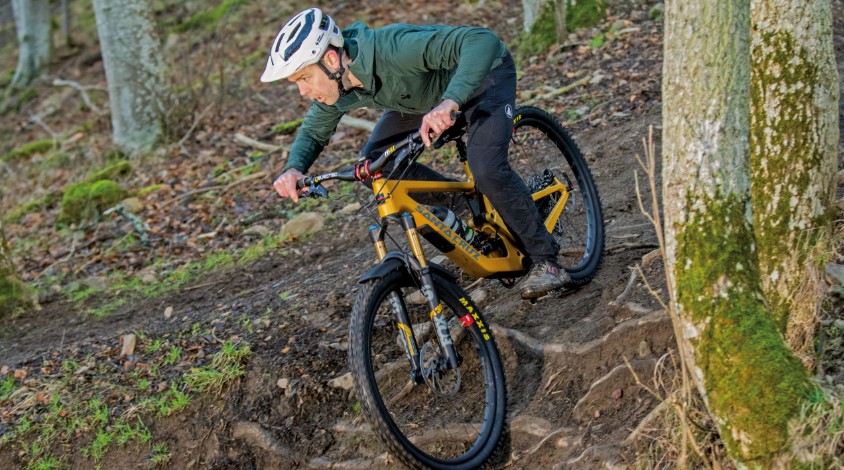
While e-bikes provide electrical assistance, it’s important to understand that they still offer physical benefits, especially when mountain biking. Here’s how they impact your health and fitness:
- Cardiovascular Exercise: Even with the electric motor, you’re still pedaling and maintaining cardiovascular activity. The e-bike allows you to ride for longer distances and steeper hills, which may increase your heart rate and contribute to overall fitness.
- Muscle Strength: E-bikes also engage the leg muscles, even though the effort is reduced when compared to a traditional mountain bike. Riders still benefit from muscle-building activity, although at a lighter intensity. The added power can help you improve stamina and strength over time.
- Less Strain on Joints: For individuals with joint issues or those who are concerned about repetitive strain, e-bikes provide a way to enjoy mountain biking without the stress on knees or hips from uphill climbing.
In essence, while you may not be getting the same level of physical exertion as on a traditional mountain bike, an e-bike still provides ample health and fitness benefits with less fatigue, making it accessible to people of varying fitness levels.
More Related Post: Specialized E-Mountain Bike Overview: Comparing, Commuter, and Road Models
Environmental Impact: Are E-Bikes More Eco-Friendly?
The growing shift to e-bikes can also be linked to environmental consciousness:
- Reduced Emissions: While e-bikes are powered by electricity, they still produce fewer emissions compared to vehicles that use fossil fuels, making them a more sustainable choice for getting around nature.
- Energy Efficiency: In comparison to traditional gas-powered vehicles used in outdoor recreation, such as ATVs, e-bikes are much more energy-efficient. They allow for quiet, clean enjoyment of mountain biking without disturbing wildlife or contributing to air pollution.
However, the environmental benefits should also consider the battery production and disposal process, which still has an impact. The long-term benefits outweigh the drawbacks, especially when the bikes are used for their intended purpose of reducing vehicle traffic and allowing more natural exploration.
E-Bikes and Their Role in the Future of Mountain Biking
E-bikes are rapidly reshaping the mountain biking landscape. As the technology behind electric motors continues to evolve, it’s safe to say that these bikes will become an increasingly popular choice for many riders.
- The growing interest in sustainability means that we might also see more eco-friendly models emerging, with recyclable materials and longer-lasting batteries.
- In many places, the rules around mountain biking trails are evolving to accommodate e-bikes, and governments and parks are beginning to recognize their benefits in terms of outdoor recreation and inclusivity.
- Future advancements in battery life, motor efficiency, and lighter construction are likely to make e-bikes an even more viable option for both casual and professional riders.
As technology improves, e-bikes will likely become more integrated into the mountain biking culture, offering more capabilities, less maintenance, and even greater performance.
Should You Buy an E-Bike for Mountain Biking?
Ultimately, whether an e-bike is a good investment depends on your individual needs and preferences. Here’s a recap of factors to consider:
- Riding Style: If you primarily enjoy climbing steep hills, riding challenging terrains, or are looking to go on long-distance mountain biking adventures, an e-bike might be a great fit.
- Physical Condition: If you’re new to mountain biking or have any physical limitations that make traditional biking challenging, an e-bike offers a more enjoyable and accessible experience.
- Environmental Impact: If you’re passionate about reducing your carbon footprint and enjoy nature sustainably, using an e-bike can be a smart eco-friendly choice.
- Cost: While e-bikes are more expensive initially, many riders find the long-term benefits, such as the ability to explore tougher terrains and extended trails, justify the cost.
An e-bike is an excellent option if you’re seeking more fun, variety, and long-distance riding without the exhaustion of traditional mountain biking. It’s not a replacement for traditional bikes but more of an enhancement, expanding your mountain biking possibilities and putting less strain on your body.
Final Thoughts
If you’re serious about mountain biking and looking for an easy-to-ride, more inclusive experience, an e-bike could very well be the ultimate choice for your next big ride.

